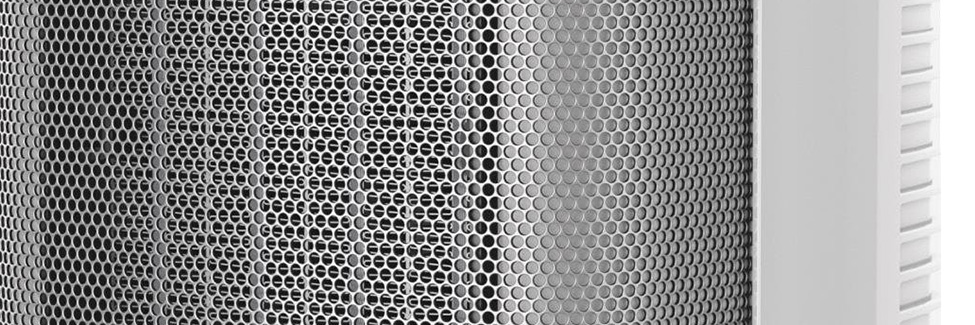
Beat the Heat Without AC: 8 Tips to Keep Your Home Cool in the Summer
Staying cool indoors during the warmest months of the year can seem challenging at times, but it’s important for your health, the condition of your property, and more. The most common step to take to create a cool, comfortable indoor environment is to crank up the air conditioner. However, heavy reliance on the AC system inevitably results in huge energy bills. Fortunately, there are several effective ways to beat the heat without relying on the AC system.
Plan Meals Strategically
Indoor heat may seep into the home from the outdoors, but it can also be generated internally. A common source of heat generated inside homes comes from meal preparation. During the summer, consider using the oven less frequently. Choose meals that can be cooked quickly so that the range isn’t in use for a long period of time.
When possible, try grilling food outdoors. Salads and sandwiches can also be great alternatives to cooked foods. By strategically planning meals, you can reduce the amount of heat generated from food prep.
Re-Seal Doors and Windows
Door and window seals should be impermeable, but this is often not the case. These seals may easily become damaged, or they may deteriorate over time. Even if the seals are only impacted by a few small holes, a significant amount of warm outdoor air can enter the home. Your regular home maintenance plan should include re-sealing all exterior doors and windows.
Run Ceiling Fans Regularly
Ceiling fans can decrease temperature throughout the home by several degrees. Efficiently cooling rooms with fans keeps airflow moving, which prevents rooms from feeling stuffy and uses the wind chill effect to cool the area. Most ceiling fans have a switch that allows them to blow air up or down depending on the season – during summer months, air should be blowing down.
By running ceiling fans, you’re also helping any air conditioning system to work more efficiently by assisting with air circulation. It might seem like a small change, but running your ceiling fans can make you feel significantly more comfortable indoors.
Note that opposed to ceiling fans, attic fans are usually placed above a hallway or living space to provide air circulation for the entire house by creating a negative pressure air system within the home.
Upgrade Your Home’s Windows
Some window styles are much less energy efficient than others. For example, some windows only have a single pane of glass rather than multiple panes. The type of window frame material used also affects energy efficiency. If your home’s windows are older, the interior seals may be damaged, which can let in unwanted air.
Learn more about your current windows to determine if an upgrade would be beneficial.
Time the Use of Heat-Generating Appliances
Home appliances like dishwashers and washing machines can noticeably elevate indoor temperature. Consider limiting use of these appliances to the evening hours, when your home temperature is cooler, or when you won’t be inside.
Alternatively, consider handwashing your dishes or drying your clothes outdoors. Along the same lines, be aware that electronics may also generate significant heat even when they’re not in use. Turn off computers, televisions, and other electronics when you’re not actively using them.
Use the Blinds
Even when energy-efficient windows are installed, direct sunlight on windows can dramatically increase the temperature in your home. During peak hours when sunlight is shining directly into your home, close your blinds. If any rooms in your home are rarely used, consider using stronger blinds or curtains most of the day to conserve cool air.
Connecting automatic blinds to a smart home technology system can help you control these features from any location.
Reduce Indoor Humidity Levels
Indoor humidity can make your home feel warmer (and stickier) than it already is. Humidity can seep in through damaged seals around windows and doors. It can also come from cooking activities, washing clothes and dishes, bathing, and more. Investing a home dehumidifier is one way to tackle the problem.
You can also reduce humidity-generating activities. For example, try limiting the length of your showers or take them during non-peak times of the day. You can also limit cooking foods that generate steam.
Upgrade Your Home’s Insulation
Insulation impacts how efficiently your home retains temperature. Many people assume that their home was built with quality insulation or that insulation will remain effective indefinitely. However, some homes are built with cheap insulation or insulation that isn’t as efficient as it used to be. For example, fiberglass insulation requires replacement over time, and it can be damaged by water exposure, pests, or other elements. Spray-in foam insulation is an effective option that many people use in exterior walls and attics.
Conclusion
While air conditioners can be great ways to get through the warmest months of the year, there are other ways to beat the heat and reduce your reliance on just one cooling system. Take advantage of these strategies to stay comfortable indoors when summer arrives. For best results, combine multiple strategies together effectively.
Feel free to share your own tips below in the comments.
Stay cool!
Still have questions? Ask an HVAC expert directly via chat or phone.
Published on 2018-11-12 by Ben Travis
Last updated on 2021-06-08


